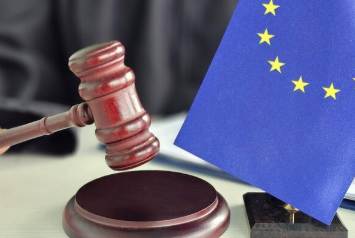Article by Sarah Benowich
Whiskey may not be the first thing to come to mind when you think of Lehman Brothers, but in a recent decision [1] by the U.S. Court of Appeals for the Federal Circuit, an upstart’s “Lehman Brothers”-branded whiskey is unregistrable as likely to cause consumer confusion. This is an important decision clarifying the standard for abandonment in trademark law.
- Background
Before its collapse in 2008, “Lehman Brothers was one of the largest investment banks in the United States, with hundreds of billions of dollars in assets under management and more
than 25,000 employees in offices worldwide. Lehman Brothers owned trademark rights in connection with its name, including a number of federal trademark registrations for the standard character mark LEHMAN BROTHERS.” [2] Lehman Brothers sold many of its businesses and other assets to Barclays Capital Inc. (“Barclays”), including “all of its LEHMAN BROTHERS trademarks and accompanying goodwill.” [3] In the following years, “Barclays allowed all of its acquired LEHMAN BROTHERS trademark registrations to expire.” [4]
In 2013, “Tiger Lily, a company with no corporate affiliation to Lehman Brothers or Barclays, filed Application No. 85/868,892 for registration of the standard character mark LEHMAN BROTHERS for beer and spirits.” [5] A few months later, Barclays then filed an application to register LEHMAN BROTHERS for use in connection with various financial services. Another few months later, Tiger Lily filed another application for registration of LEHMAN BROTHERS for use in connection with bar and restaurant services.
- The Board Proceedings
Barclays opposed both of Tiger Lily’s applications, primarily arguing that “Tiger Lily’s LEHMAN BROTHER marks are likely to cause confusion with Barclays’ LEHMAN BROTHERS marks.” [6] Critically, the Board held “that Tiger Lily failed to show abandonment because LEHMAN BROTHERS continues to function as a mark for Barclays” and that Barclays, whose first use of the mark was far earlier than Tiger Lily, “had shown prior use of the mark for purposes of its oppositions.” [7]
As to the likelihood of confusion factors, the Board found that “[w]hile the parties’ goods and services are distinctly different, goods and services need not be identical or even competitive in nature to support a finding of likelihood of confusion. Customers encountering Tiger Lily’s goods and services under the well-known LEHMAN BROTHERS mark would be likely to mistakenly assume that Tiger Lily’s goods are in some way related to Barclays.” [8]
In support of this finding, the Board looked to Barclays’ evidence that it provided promotional materials (including whiskey decanters and other alcohol-related gifts), which “are still collected, sold, and traded” in the consuming public. [9] Combined with Tiger Lily’s “admi[ssion] that it seeks to draw a connection between its goods and services and the financial and investment business LEHMAN BROTHERS, and only filed its application when it believed that the LEHMAN BROTHERS mark was abandoned. [… the] Board found, based on the evidence, consumers would view Tiger Lily’s goods and services as the types of goods and services that owners of well-known marks, such as Barclays, could expand their product lines to cover.” [10] The Board found that Barclays did not prove its three other main arguments: (1) false suggestion of a connection; (2) dilution; and (3) lack of bona fide intent. [11] Thus, on the basis of its likelihood of confusion finding, the Board sustained Barclays’ oppositions.
- The Federal Circuit’s Decision
The Federal Circuit addressed Tiger Lily’s main challenges to the Board’s determinations:
- Abandonment
The hallmarks of abandonment are “(1) nonuse; and (2) intent not to resume use.” “[E]ven limited use can be sufficient to avoid a finding that use of a mark has been ‘discontinued’ under the statute.” [12]
The Federal Circuit ultimately affirmed the Board’s conclusion that Barclays had not abandoned the LEHMAN BROTHERS mark because it continued to use the mark in connection with “numerous publicfacing financial and business transactions since it licensed the use of the LEHMAN BROTHERS mark from Barclays” and “in signage, email signatures, web addresses, reports” and “legacy LEHMAN BROTHERS research materials.”[13] This was so regardless of Lehman Brothers’ bankruptcy proceedings.
- Likelihood of Confusion
“Under § 2(d) of the Lanham Act, a mark may be refused registration on the principal register if it is ‘likely, when used on or in connection with the goods of the applicant, to cause confusion’ with another registered mark.” 15 U.S.C. § 1052(d). Likelihood of confusion is a legal determination based on underlying findings of fact relating to the DuPont factors. Not all of the DuPont factors are necessarily relevant or of equal weight in a given case, and any one of the factors may control a particular case. Only the DuPont factors of significance to the particular mark need be considered in the likelihood of confusion analysis.” [14]
Aside from the critical factor of the identical nature of the marks, the key factor was the similarity of the goods and services, which, here, Tiger Lily argued – financial services and liquor sales and service – were entirely dissimilar. Although the goods and services are distinct, “because the LEHMAN BROTHERS mark has achieved a high degree of fame, it is afforded a broad scope of protection” and such a famous mark “casts a long shadow which competitors must avoid.” [15] And, critical evidence showed that “by referencing the Lehman Brothers history in its marketing materials and by copying Lehman Brothers’ logo, Tiger Lily is seeking to take advantage of the widespread consumer recognition of Barclays’ LEHMAN BROTHERS mark.” [16]
- Practical Implications
This decision highlights the enduring power and residual goodwill that strong, famous marks have, and that the bar for proving abandonment is high. The Board – and courts – seem particularly unwilling to consider a mark to have been abandoned when the challenger appears to be trying to trade on that residual goodwill and fame of the mark.
[1] See Tiger Lily Ventures Ltd. v. Barclays Capital Inc., Barclays PLC, Case Nos. 2021-1107, 2021-1228, 2022 U.S. App. LEXIS 14985, __ F.4th __, 2022 WL 1752768.
[2] See id. at *2.
[3] See id.
[4] See id. at *2-3.
[5] See id. at *3.
[6] See id.
[7] See id. at *4.
[8] See id. at *5.
[9] See id. at *5-6.
[10] See id. at *6 (internal citations and quotations omitted.)
[11] See id. at *7.
[12] See id. at *11.
[13] See id. at *11-12.
[14] See id. at *17 (internal citations and quotations omitted)
[15] See id. at *18-19.
[16] See id. at *20.



